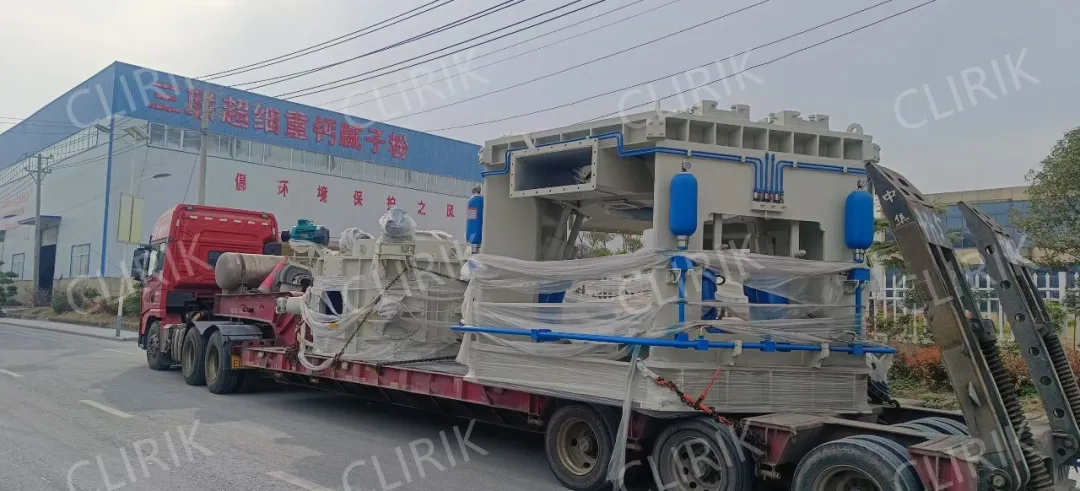For product information and pricing, Chat with sales agent:
or email us : sales@clirik.com
Click links below to see related products.

As global industries move rapidly toward greener, smarter, and more efficient practices, the powder processing sector—an essential component of the industrial chain—is undergoing a profound transformation. With increasing demands for higher quality and output, alongside stricter environmental regulations, companies are seeking ways to upgrade their production capabilities. CLIRIK’s CLUM1736 project has emerged as a standout example, offering valuable insights into the future of powder processing.

Located in an industrial park in Nanyang, the CLUM1736 project marks a significant milestone. The client, a long-time partner of CLIRIK, had previously purchased two HGM125 ultrafine mills between 2015 and 2016. Their renewed trust was evident as they invested in two more advanced models—CLUM1425 and CLUM1736—bringing the total to four machines. Despite a compact 12×18 m² space, this project has become a shining example of efficient powder processing.
The material processed is calcium carbonate, a versatile mineral used across plastics, rubber, papermaking, and coatings. The client demanded not only high output but also premium powder quality, aiming to reduce both electricity and labor costs. CLIRIK responded with a tailored solution, combining its proven HGM125 units with the newly developed CLUM1425 and CLUM1736 machines. Together, these devices form a highly efficient and reliable production line.
Both the CLUM1425 and CLUM1736 integrate cutting-edge technologies. Their innovative grinding chambers ensure thorough contact between grinding media and materials, resulting in higher efficiency and uniform particle size. The CLUM1736 model, in particular, features a specially designed chamber that enhances grinding consistency and product quality.
These machines are equipped with precision classifiers featuring eight heads, allowing accurate particle size separation. Compared to traditional classifiers, this setup ensures higher product yield and fewer rejected materials—key factors in cost-effective production.
Rather than functioning independently, all four units operate in synergy. The HGM125 machines handle initial coarse grinding, while the CLUM units manage fine grinding and precise classification. This collaborative system not only increases efficiency but also maintains stable product quality, maximizing the overall production capacity.
CLIRIK’s engineering team fine-tuned grinding parameters such as time, pressure, and media type to suit calcium carbonate characteristics. These adjustments yielded powders with narrower particle size distributions and better shape, boosting performance in downstream applications. For example, in plastics, the uniform particles improve dispersion and strength of the final product.
To address energy and labor concerns, the project integrates an advanced intelligent control system. This platform monitors parameters like temperature, pressure, and speed in real-time and adjusts machine settings accordingly. When material properties shift, the system auto-calibrates for optimal performance, minimizing energy waste and maximizing output. Remote monitoring further reduces staffing needs and boosts operational safety and efficiency.
The system also features predictive maintenance, issuing early alerts to prevent breakdowns and reduce downtime, contributing to higher productivity and lower maintenance costs.
Environmental sustainability was a major focus. Advanced sealing technology and efficient dust collectors were adopted to prevent emissions and meet environmental regulations. Additionally, the overall process was streamlined to reduce energy consumption and environmental impact, making the project a benchmark for green manufacturing in the industry.
Despite space limitations, CLIRIK’s team optimized the factory layout, redesigning equipment placement for smoother material flow and reduced losses. They also lowered the main equipment by 2.5 meters, increasing structural stability and freeing up room for maintenance and operation—transforming a tight space into a highly efficient production hub.
Though space-constrained, the client maintains strong connections within the industrial park, also operating other businesses like rose farming. This multi-industry presence promotes synergy—sharing resources such as raw materials, logistics, and workforce. The CLUM1736 project not only benefits the client but also revitalizes the surrounding industrial ecosystem.
The project’s launch led to a sharp increase in output, enabling the client to meet growing market demands. Higher quality powders also allowed the company to command better prices. As a result, sales and profits have risen substantially, according to client feedback.
Thanks to improved technology and intelligent systems, energy and labor costs dropped significantly. Although exact figures are client-specific, cost reductions directly translate into higher profit margins. Less downtime and lower maintenance expenses further strengthen the company’s bottom line.
The project generated numerous job opportunities—from installation and operation to maintenance. It also spurred growth in surrounding sectors such as raw material supply and logistics, contributing to the local economy’s vitality.
The success of CLUM1736 highlights the critical role of R&D. With advancements like novel grinding mechanisms, high-precision classifiers, and intelligent systems, CLIRIK continues to stay ahead in meeting evolving customer needs and industry standards.
Every client is unique, and CLIRIK’s customized approach—from equipment selection to layout planning—ensures maximum customer satisfaction and loyalty. This strategy has become a strong pillar of the company’s market reputation.
With environmental regulations tightening, sustainable practices are no longer optional. CLIRIK’s eco-conscious designs in the CLUM1736 project offer a blueprint for the entire industry. Balancing economic and environmental benefits is essential for long-term success.
